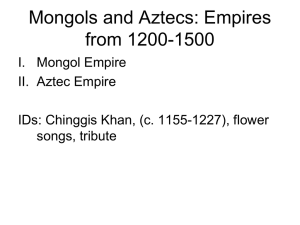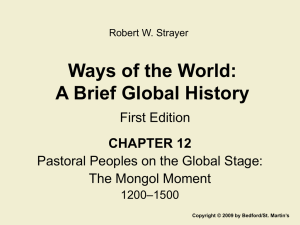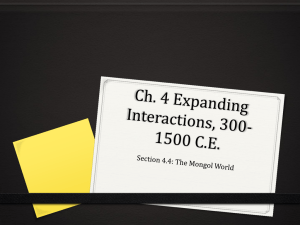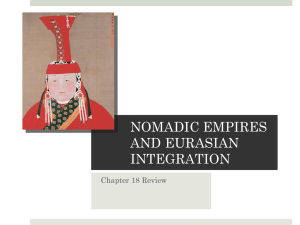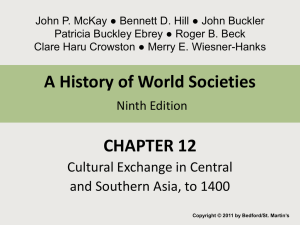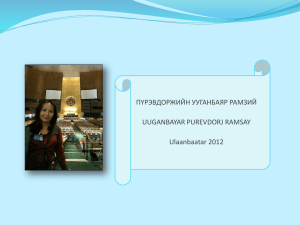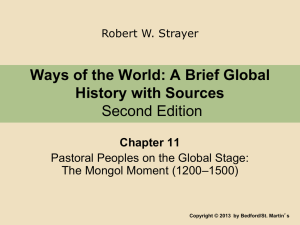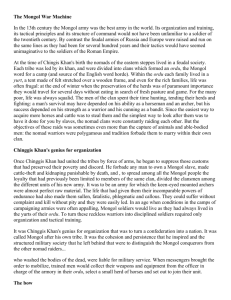Chapter 14: The last great nomadic challenges from Chinggis Khan
advertisement
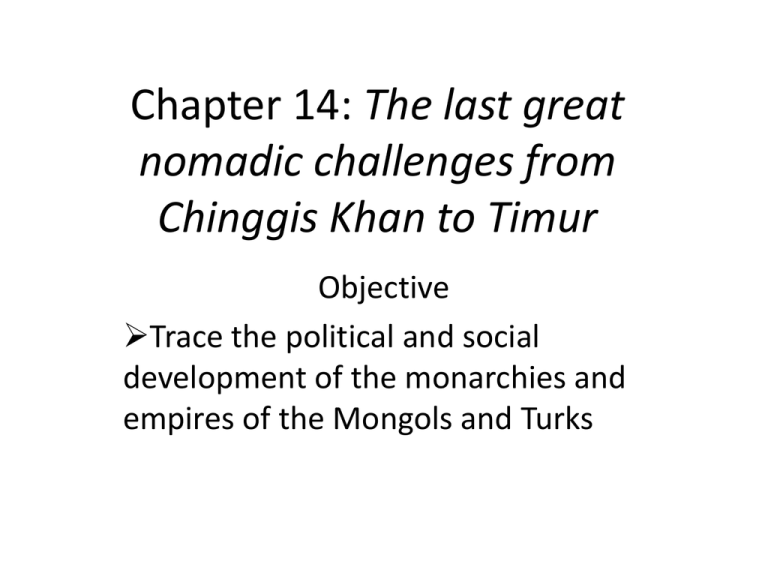
Chapter 14: The last great nomadic challenges from Chinggis Khan to Timur Objective Trace the political and social development of the monarchies and empires of the Mongols and Turks Summary • 13th century nomads reenter the picture • The Mongols ended or interrupted the great post classical empires while extending the world network • The Mongols under Chinggis Khan and his successors dominated most of Asia for 150 yrs. • Mongols are portrayed as barbarians but generally people under Mongol rule enjoyed peace, religious tolerance and had unified laws • Mongol territory was a bridge between civs. of the east as products and ideas moved among civilized and nomadic people Mongol Collapse • The empire began to collapse after rebellion in China • In the 1360s Timur-i Lang attempted to reestablish the Mongol empire • Instead his forces laid waste to large areas of the Middle East, India and southern Russia • One unforeseen result of the Mongol empire was the rise to power of Moscow in Russia Evaluate how the Mongol conquest can be said to have brought an end to the postclassical civs. in eastern Europe , western Europe and Islam • In western Europe Mongol influence had a limited direct effect as the conquest was quickly halted • An important indirect effect was facilitating transmission of the Black Death to western Europe • The conquest marked the end of western European postclassical period • The opening of trade with the east marked the beginning of the aggressive western commerce typical of the early modern period • For Islam, the conquest ended Abbasid and other minor dynastic rule • This opened the path for political division of the Islamic heartland between the Ottoman and Mamluks Appraise the proposition that the Mongol era was an extension of the incursions of nomadic peoples into the affairs of sedentary civs. In what sense was it a civilization in its own right? • Mongol khanates remained dependent on tribal organization and herding • They attempted to maintain their separateness as a people with nomadic cultural patterns • Even in China under the Yuan dynasty, strict efforts were made to uphold cultural differences • Their control of trade was typical of nomadic incursions; so was the limited period of the Yuan rule and its use of cities • Chinggis Khan established a uniquely Mongol admin. for an empire based on such Islamic and Chinese precedents as a universal law code, adoption of a Mongol script, maintenance of empire-wide peace and promotion of commerce and travel Evaluate how the Mongol conquest can be said to have brought an end to the postclassical civs. in eastern Europe , western Europe and Islam • Eastern Europe marked the end of Kievan dominance • The political balance shifted to Moscow as it took up chief resistance to Mongol Rule • The religious center also moved to Moscow • These moves marked the beginning of Russian political centralization • In Byzantium, the Mongol conquest meant the opening of Ottoman dominance in Asia Minor • Also the eventual loss of Constantinople

